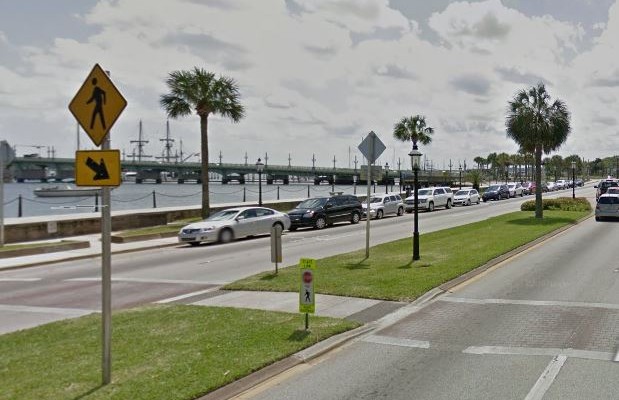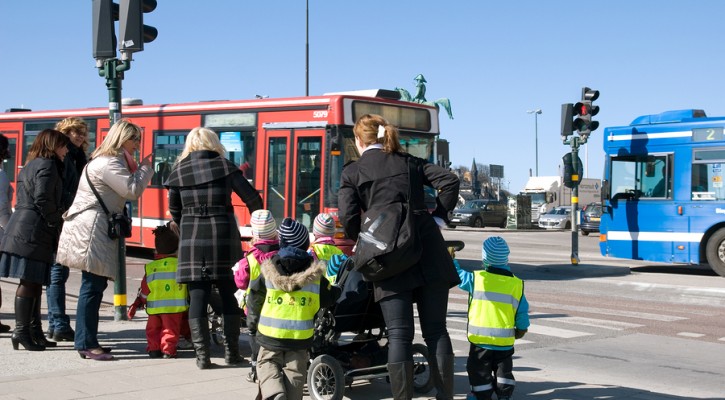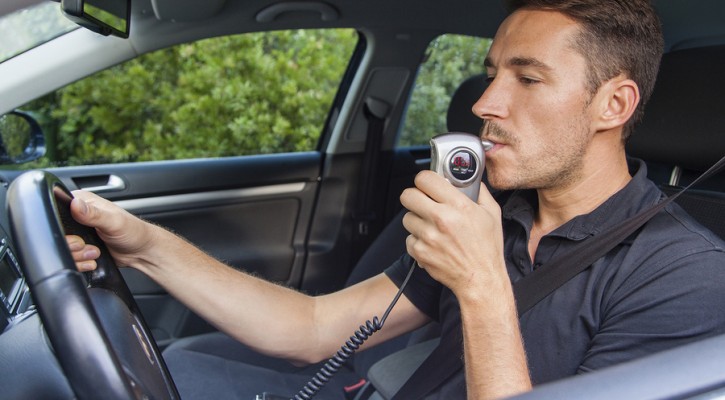Tag Archive: highway safety

Ask The Traffic School Instructor: Do Pedestrians Always Have The Right-Of-Way?
January 13, 2016
Question: I was attending a work related safety training session and the instructor said that, in Florida, pedestrians don’t have the right of way. Is that true?
Answer: For the most part, no, it isn’t true but it depends on the circumstances.
First off, we have to look at the term “right-of-way.” There’s a lot of confusion about that term and people tend to think in terms of who has the right-of-way in a given situation when, in fact, no one has the right-of-way. The law doesn’t give anyone the right-of-way; it only says who should give up or yield the right-of-way to another. You can’t take the right-of-way, you can only give it to someone else and the law lists the circumstances in which a driver should give up the right-of-way to another.
Let’s look first at what the law requires of pedestrians:
- On roadways where there’s a sidewalk, pedestrians must stay off the paved portion of the roadway reserved for vehicles.
- If there’s no sidewalk, pedestrians are required to walk on the shoulder on the left side of the road facing oncoming traffic.
- Pedestrians are only allowed to cross the roadway at a marked crosswalk or at an unmarked crosswalk at an intersection. (Even if it’s not marked, the area next to an intersection is considered to be a crosswalk.)
- Pedestrians are required to obey all traffic signals and signs just like drivers.
- Even if they’re crossing at a marked or unmarked crosswalk, pedestrians are required to give up the right-of-way if a vehicle is approaching so closely that it wouldn’t be possible for it to safely stop in time.
Now let’s look at those times when drivers are required to give up the right-of-way to pedestrians:
- Drivers are required to yield the right-of-way by slowing or stopping, if necessary, when a pedestrian is crossing the street in a marked or unmarked crosswalk.
- If a pedestrian is crossing the street at a crosswalk and is on the driver’s side of the road or will be on the driver’s side of the road by the time the driver gets there, the driver is required to slow and stop, if necessary, for the pedestrian to pass.
- On a multi-lane roadway, if a driver ahead has stopped for a pedestrian in the crosswalk, drivers approaching in the other lanes must also stop until the pedestrian has safely crossed.
- When a driver is entering the roadway from a parking lot, driveway, or alley, the driver must yield to pedestrians on the sidewalk before proceeding.
- When turning a corner, drivers must yield to pedestrians who are already in the crosswalk.
Special circumstances:
If a blind or visually impaired pedestrian, using a white cane or guided by a guide dog, is attempting to cross the street, whether at a crosswalk or not, all traffic in both directions must come to a complete stop.
Watch for children:
Watch out for children, especially near schools, parks, and residential zones. Kids are in their own little world and they don’t care what the law says.
Vulnerable road users
A new law went into effect in Florida a couple of years ago that lists those who are regarded as vulnerable road users. Vulnerable road users include:
- Pedestrians, including those working on the roadway
- Users of bicycles, mopeds, or scooters
- Skaters and skateboarders
- Horse drawn carriages
- Motorcyclists
- Someone riding an animal
- Users of electric mobility assistance devices
- Users of wheelchairs
- Tractors or other vehicles designed for farm use
The new law requires motorists who are involved in a crash with a vulnerable road user to stop and render aid. Those who fail to do so will face severe penalties.
The lists above don’t include every instance covered under the law, just the basic ones. To see what Florida law says about pedestrians, read: The 2015 Florida Statutes – 316.130 Pedestrians; traffic regulations.—
Tornado On The Road
April 15, 2015
If you encounter a tornado on the road, what should you do? The driver in the video above was faced with this situation and he had no idea what he should do to escape the force of the tornado. According to the experts, he made one mistake but he also did the correct thing.
We’re in the height of tornado season and, while most tornados at this time of year occur in the plains states, tornadoes can form anywhere there are thunderstorms. Thanks to a 1991 video by a Kansas TV crew, a lot of people think that a highway overpass is the safest place to seek shelter from a storm but weather experts say that an overpass can be the most dangerous place of all to seek shelter. There are several reasons for that:
- The structure of the overpass can channel the winds into a wind tunnel effect and make them even stronger.
- Flying debris, traveling at up to 200 mph, can be channeled up into the narrower parts of the overpass and can do as much damage as a bullet. In the Kansas TV video, you can see debris being sucked up toward the area where the people are hiding.
- The wind under the overpass can change as much as 180 degrees.
- There are no handholds to cling to as the storm passes.
It turns out that the Kansas film crew was just extremely lucky that the tornado wasn’t that strong.
So what should you do if you encounter a tornado on the road? Weather experts offer the following advice:
- Do not seek shelter under an overpass.
- If there’s time, pull off the road and seek shelter in a strong building. Remain in the lowest part of the building in a windowless room or hallway if possible.
- If you can’t get to a building, seek an area such as a culvert or ditch below the level of the roadway; Cover your head with your hands.
- If there is nowhere to escape, remain in your vehicle with your seat belt fastened; lay down below window level and cover your head with a coat or blanket, if possible.
The man in the video above made a mistake by backing up under the overpass but he made the right choice by remaining inside his vehicle and laying down below the window level. He was very fortunate.
Remember, just because the funnel cloud has passed, you aren’t out of danger yet. Straight line winds that flow outside the area of the funnel cloud can do more damage than the funnel cloud itself. Another video from the recent tornado in Illinois shows a semi toppling over well after the funnel cloud had passed.
For more information on storm safety and how to deal with a tornado on the road, read: Thunderstorms, Tornadoes, Lightning…Nature’s Most Violent Storms

Reflective Vests At School Bus Stops
April 8, 2015
Should children be required to wear reflective vests at school bus stops? That’s the opinion of a South Carolina man after he was involved in a tragic incident last month.
At 6:30 in the morning, a 15 year old girl, escorting her younger siblings to school, tried to cross a four lane highway. Wearing dark clothes and crossing away from an intersection, she was struck first by a semi and then struck again as she was lying in the roadway. Police didn’t charge either driver because they felt there was little either driver could do to avoid hitting her.
Torn by the incident, the driver of the second vehicle wrote a letter to his state representative asking for a law that would require children at school bus stops to wear reflective vests.
His proposal isn’t a bad idea. While it may not be necessary for the state to pass a law, it is certainly something that school boards should encourage and parents can easily do on their own. With the time change last month, many kids are heading out to school while it’s still dark. Kids are impulsive and don’t always follow the rules. Anything that can be done to make them more visible is a good idea.
A quick search for children’s reflective vests on Google shows a wide variety of vests from $5 to $15. A cheap price to make the kids more visible. Reflective tape can also be sewn or pasted on backpacks at a very low cost.
Read more: Driver who hit Darlington teen asking lawmakers to require safety vests at bus stops

Drunk/Drugged Driving: Good News And Bad News
February 9, 2015
There’s good news and bad news from a study released recently by the National Highway Transportation Safety Administration (NHTSA). The good news is that drunk driving is down significantly but drugged driving is on the rise.
The National Roadside Survey, a survey conducted five times over the last 40 years, shows that drunk driving is down significantly since the last survey in 2007. The National Roadside Survey is a voluntary roadside survey conducted at points throughout the nation. Drivers are notified by signs leading to the survey site that the survey is completely voluntary and the results will remain anonymous.
According to the NHTSA survey, approximately eight percent of drivers during weekend night time hours were found to have alcohol in their system. Just over one percent of the drivers blew a .08 on the breathalyzer, the level at which drivers are deemed legally drunk in all 50 states. The number of drunk drivers in the survey was down by 30 percent since the last survey conducted in 2007 and 80 percent since the first survey conducted in 1973.
That good news was tempered by the fact that the number of drivers with drugs in their system that could affect their driving increased by almost 23 percent. The number of drivers with marijuana in their system increased by 50 percent.
The survey found that more than 15 percent of drivers in the survey tested positive for illegal drugs, a 25 percent increase over the previous survey. However, drugs that can affect driving aren’t just illegal drugs. Many drivers fail to realize that a number of prescription and over-the-counter medications can affect a person’s ability to drive safely. Overall, about 20 percent of drivers tested positive for some type of drug that could affect their driving abilities, up from 16.3 percent in 2007.
NHTSA credited anti-drunk driving campaigns with the lower rate of drunk driving. It seems that new campaigns are in order to reduce the number of drugged drivers on the road.
Read more: NHTSA Releases Two New Studies on Impaired Driving on U.S. Roads
